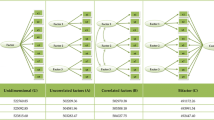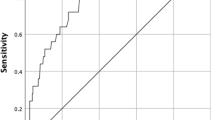Abstract
Purpose
According to DSM, interpersonal functioning deficits are a main criterion for the general definition of personality disorders (PDs), but some PD diagnoses do not appear to be related to impaired interpersonal functioning. Social deficits have rarely been studied in all PD dimensions to date.
Methods
We analyzed 511 adults aged 20–41 years from the general population of the canton of Zurich, Switzerland, using data from the Epidemiology Survey of the Zurich Programme for Sustainable Development of Mental Health Services (ZInEP). PD dimensions were measured with a questionnaire and indicators of interpersonal functioning with a semi-structured interview. Associations were analyzed with generalized linear models.
Results
All PD dimensions were significantly associated with various indicators of interpersonal functioning deficits, such as distress and conflicts in friendships and partnership, feeling lonely, few close friends, and reduced social support. Schizotypal and borderline PD were relatively strongly associated with distress in friendships when compared with other PD dimensions. Furthermore, both dimensions were significantly related to all indicators of interpersonal functioning deficits.
Conclusions
Subjects scoring high on any PD dimension reported considerable deficits in interpersonal functioning as characterized by a solitary lifestyle, conflictual and distressful social relations, and lack of social support. All DSM-IV PDs are associated with poor interpersonal functioning, but there is some evidence that schizotypal and borderline symptomatology affects deficits in social interactions even more profoundly and pervasively than other PD dimensions.

Similar content being viewed by others
References
American Psychiatric Association (2000) Diagnostic and Statistical Manual of Mental Disorders DSM-IV-TR, 4th text revision edn. American Psychiatric Association, Washington, DC
American Psychiatric Association (2013) Diagnostic and statistical manual of mental disorders DSM-5. American Psychiatric Association, Washington, DC
Funtowicz MN, Widiger TA (1999) Sex bias in the diagnosis of personality disorders: an evaluation of the DSM-IV criteria. J Abnorm Psychol 108:195–201
Cramer V, Torgersen S, Kringlen E (2006) Personality disorders and quality of life. A population study. Compr Psychiatry 47:178–184
Oltmanns TF, Melley AH, Turkheimer E (2002) Impaired social functioning and symptoms of personality disorders assessed by peer and self-report in a nonclinical population. J Pers Disord 16:437–452
Grant BF, Hasin DS, Stinson FS, Dawson DA, Chou SP, Ruan WJ, Pickering RP (2004) Prevalence, correlates, and disability of personality disorders in the United States: results from the national epidemiologic survey on alcohol and related conditions. J Clin Psychiatry 65:948–958
Jackson HJ, Burgess PM (2000) Personality disorders in the community: a report from the Australian National Survey of Mental Health and Wellbeing. Soc Psychiatry Psychiatr Epidemiol 35:531–538
Narud K, Mykletun A, Dahl AA (2005) Quality of life in patients with personality disorders seen at an ordinary psychiatric outpatient clinic. BMC Psychiatry 5:10
Skodol AE, Pagano ME, Bender DS, Shea MT, Gunderson JG, Yen S, Stout RL et al (2005) Stability of functional impairment in patients with schizotypal, borderline, avoidant, or obsessive-compulsive personality disorder over two years. Psychol Med 35:443–451
Coid J, Yang M, Tyrer P, Roberts A, Ullrich S (2006) Prevalence and correlates of personality disorder in Great Britain. Br J Psychiatry 188:423–431
Samuels J, Nestadt G, Romanoski AJ, Folstein MF, McHugh PR (1994) DSM-III personality disorders in the community. Am J Psychiatry 151:1055–1062
Ekselius L, Tillfors M, Furmark T, Fredrikson M (2001) Personality disorders in the general population: DSM-IV and ICD-10 defined prevalence as related to sociodemographic profile. Pers Individ Differ 30:311–320
Skodol AE, Gunderson JG, McGlashan TH, Dyck IR, Stout RL, Bender DS, Grilo CM et al (2002) Functional impairment in patients with schizotypal, borderline, avoidant, or obsessive-compulsive personality disorder. Am J Psychiatry 159:276–283
Samuels J (2011) Personality disorders: epidemiology and public health issues. Int Rev Psychiatry 23:223–233
Hardt J, Egle UT, Kappis B, Hessel A, Brahler E (2004) Symptom checklist SCL-27: results of a representative German survey. Psychother Psychosom Med Psychol 54:214–223
Angst J, Gamma A, Neuenschwander M, Ajdacic-Gross V, Eich D, Rössler W, Merikangas KR (2005) Prevalence of mental disorders in the Zurich cohort study: a twenty year prospective study. Epidemiol Psichiatr Soc 14:68–76
Dunn G, Pickles A, Tansella M, Vazquez-Barquero JL (1999) Two-phase epidemiological surveys in psychiatric research. Br J Psychiatry 174:95–100
Schotte CKW, de Doncker D (1994) ADP-IV questionnaire. University Hospital Antwerp, Antwerp
Doering S, Renn D, Hofer S, Rumpold G, Smrekar U, Janecke N, Schatz DS et al (2007) Validation of the German version of the assessment of DSM-IV personality disorders (ADP-IV) questionnaire. Z Psychosom Med Psychother 53:111–128
Schotte CKW, de Doncker D, Vankerckhoven C, Vertommen H, Cosyns P (1998) Self-report assessment of the DSM-IV personality disorders. Measurement of trait and distress characteristics: the ADP-IV. Psychol Med 28:1179–1188
Schotte CKW, de Doncker DA, Dmitruk D, Van Mulders I, D’Haenen H, Cosyns P (2004) The ADP-IV questionnaire: differential validity and concordance with the semi-structured interview. J Pers Disord 18:405–419
Angst J, Dobler-Mikola A, Binder J (1984) The Zurich study—a prospective epidemiological study of depressive, neurotic and psychosomatic syndromes. I. Problem, methodology. Eur Arch Psychiatry Neurol Sci 234:13–20
Gunderson JG, Stout RL, McGlashan TH, Shea MT, Morey LC, Grilo CM, Zanarini MC et al (2011) Ten-year course of borderline personality disorder: psychopathology and function from the collaborative longitudinal personality disorders study. Arch Gen Psychiatry 68:827–837
Zanarini MC, Frankenburg FR, Reich DB, Fitzmaurice G (2010) The 10-year course of psychosocial functioning among patients with borderline personality disorder and axis II comparison subjects. Acta Psychiatr Scand 122:103–109
Hengartner MP, Ajdacic-Gross V, Rodgers S, Müller M, Rössler W (2013) Childhood adversity in association with personality disorder dimensions: new findings in an old debate. Eur Psychiatry (in press)
Carpenter D, Clarkin JF, Glick ID, Wilner PJ (1995) Personality pathology among married adults with bipolar disorder. J Affect Disord 34:269–274
Leader JB, Klein DN (1996) Social adjustment in dysthymia, double depression and episodic major depression. J Affect Disord 37:91–101
Skodol AE, Grilo CM, Pagano ME, Bender DS, Gunderson JG, Shea MT, Yen S et al (2005) Effects of personality disorders on functioning and well-being in major depressive disorder. J Psychiatr Pract 11:363–368
Ruggeri M, Gater R, Bisoffi G, Barbui C, Tansella M (2002) Determinants of subjective quality of life in patients attending community-based mental health services. The South-Verona Outcome Project 5. Acta Psychiatr Scand 105:131–140
Soeteman DI, Verheul R, Busschbach JJ (2008) The burden of disease in personality disorders: diagnosis-specific quality of life. J Pers Disord 22:259–268
Johnson JG, Cohen P, Kasen S, Skodol AE, Brook J (2000) Age-related change in personality disorder symptom levels between early adolescence and adulthood: a community-based longitudinal investigation. Acta Psychiatr Scand 102:265–275
ten Have M, Iedema J, Ormel J, Vollebergh W (2006) Explaining service use for mental health problems in the Dutch general population: the role of resources, emotional disorder and functional impairment. Soc Psychiatry Psychiatr Epidemiol 41:285–293
Swanson J, Swartz M, Estroff S, Borum R, Wagner R, Hiday V (1998) Psychiatric impairment, social contact, and violent behavior: evidence from a study of outpatient-committed persons with severe mental disorder. Soc Psychiatry Psychiatr Epidemiol 33(Suppl 1):S86–S94
Acknowledgments
ZInEP was supported by a private donation. The donor had no further role in the experimental design, the collection, analysis, and interpretation of data, the writing of this report, or the decision to submit this paper for publication.
Conflict of interest
On behalf of all authors, the corresponding author states that there is no conflict of interest.
Author information
Authors and Affiliations
Corresponding author
Rights and permissions
About this article
Cite this article
Hengartner, M.P., Müller, M., Rodgers, S. et al. Interpersonal functioning deficits in association with DSM-IV personality disorder dimensions. Soc Psychiatry Psychiatr Epidemiol 49, 317–325 (2014). https://doi.org/10.1007/s00127-013-0707-x
Received:
Accepted:
Published:
Issue Date:
DOI: https://doi.org/10.1007/s00127-013-0707-x




